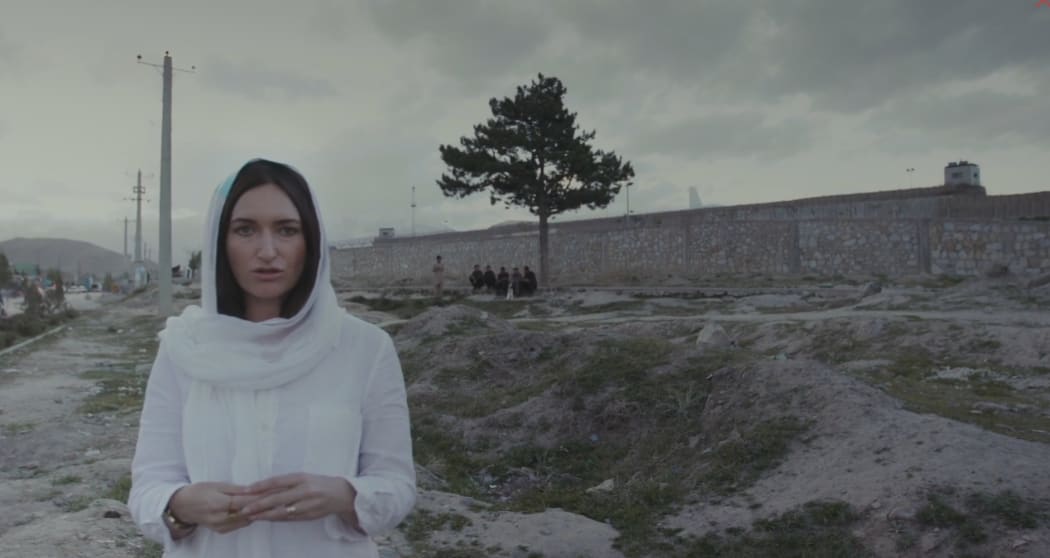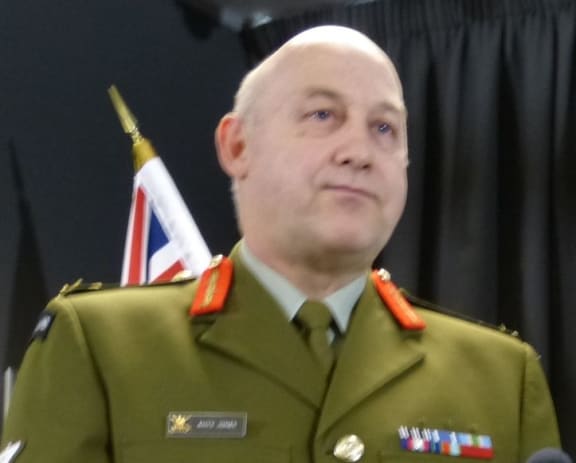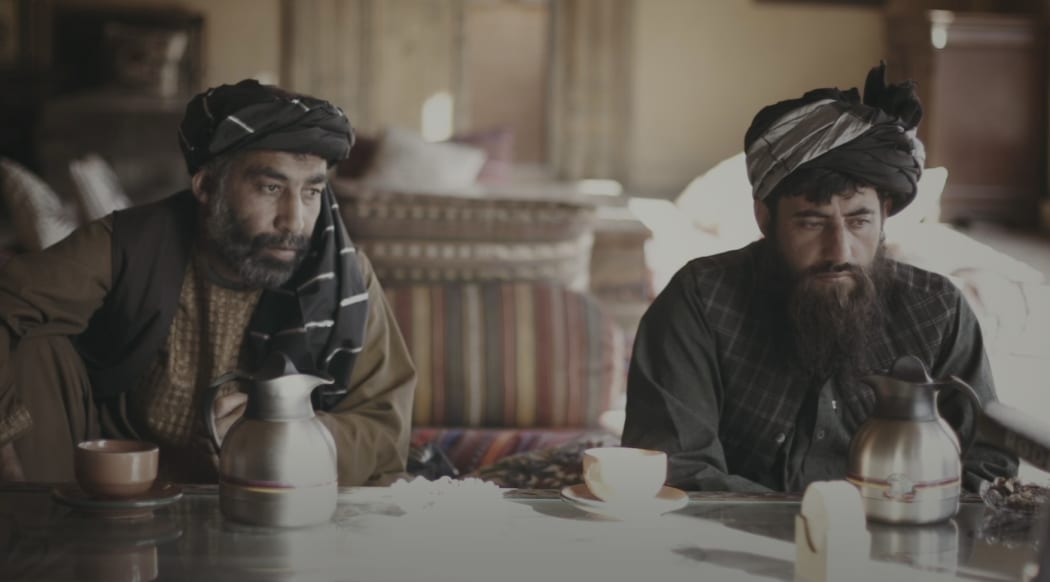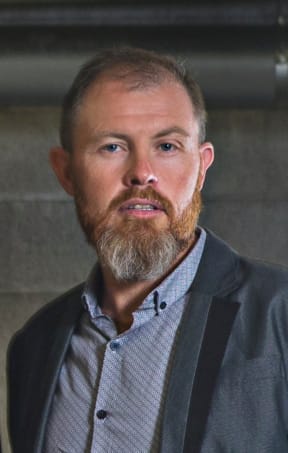Fairfax Media’s investigative series The Valley is New Zealand's most ambitious multimedia journalism project yet. It combines TV documentary, interactive content and virtual reality - and for the first time all this was funded from the public purse. What did it reveal?

Paula Penfold in Afghanistan in The Valley Photo: screenshot
“There’s still so much we don’t know about our deployment here. It feels as though the first draft of history has yet to be told,“ says Stuff Circuit reporter Paula Penfold on the ground in Afghanistan in part one of The Valley.
The Valley uses all the digital age media tools to focus mainly on two cases of lives lost in Afghanistan during the deployment there which ended in 2013.
It is also about how the public hasn’t heard the full story because the NZ Defence Force and the government haven’t been forthcoming with all the facts.

The Valley is the most ambitious new Zealand multi-media journalism project to date. Photo: supplied
The trailer said The Valley would reveal “disturbing details about the Battle of Baghak” in which two New Zealand soldiers and four Afghans died in 2012.
Stuff Circuit’s Paula Penfold - with producer Eugene Bingham and director Toby Longbottom - had already a crack at the first draft on that for TV3’s current affairs show 3D back in 2015.
That programme showed that only selected sections of battlefield video had been made public by the NZDF. Previously withheld footage contradicted the official version of events.
3D was axed in the huge shakeup at TV3 which saw current affairs shows about the real world elbowed aside to make room for more reality TV. The trio then decamped to Fairfax Media to produce multimedia journalism for its stuff.co.nz site - under the banner Stuff Circuit.
Last year public funding from New Zealand on Air became available for the first time for documentary projects outside of traditional broadcasting and NZOA granted $324,000 to Fairfax Media for an update on the Battle of Baghak.
Fairfax Media also took a multimedia approach to promoting The Valley. On the day the series went live online there Fairfax’s daily papers The Press and Dominion Post both carried a strongly-worded editorial:
“The Defence Force's reluctance to speak, beyond the bare bones of events, and the resistance to any real questions being answered is weak. The silence after a 12-year commitment of our people to the cause is deafening.”
What The Valley reveals

Lieutenant General Rhys Jones. Photo: RNZ
The first person who appears in The Valley is the former Defence Force chief Rhys Jones, now retired. He was one of those the media have accused in the past of obstructing what Paula Penfold called the first draft of history.
While he is pretty measured in what he says in The Valley, other former soldiers didn't hold back. They said some officers were too willing to take the New Zealand Provincial Reconstruction Team well beyond its main mandate of rebuilding and winning hearts and minds.
They also said some troops were overconfident when it came to combat and an aggressive strategy called "bait and hook" was used to draw their enemies into a fight.
The Valley highlighted what it said were command and control errors in Baghak in 2012, and the struggle to get on the record information and evidence such as unedited battlefield footage.
The Valley also claims the military court of inquiry into what happened reached the wrong conclusions because the investigation was inadequate and incomplete.
The Valley also reveals New Zealand soldiers were collecting biometric data from Afghans - including the dead - something the minister of defence at the time Wayne Mapp admitted he didn’t know.
Behind the story of the 'relcutant hero'

Local witnesses say New Zealand SAS troops they were mistreated locals in Uruzgan province, Afghanistan. Photo: Supplied.
The Valley also looked at another fatal battle in 2004 which involved the SAS.
This one ended with a good news story for the NZDF when Willie Apiata was later awarded a Victoria Cross.
On Anzac Day in 2008, the Willie Apiata story was aired in the TVNZ documentary Reluctant Hero. TVNZ’s annual report for 2008 said that received more praise than any other factual show screened in preceding three years.
The Dominion Post later reveled the NZDF spent $35,000 on PR advice to "maximise the coverage of Willie Apiata receiving the Victoria Cross".
This bothered University of Canterbury’s Donald Matheson, co-author of an international book called Digital War Reporting.
“This film contained shadowy reconstructions of the 2004 ambush but provided no details on what Apiata and his fellow SAS trops had been doing in Afghanistan” he wrote in a 2010 paper called: “Can’t talk now, mate: New Zealand news media and the invisible Afghan war” (PDF)
"To this day no information has been released . . .and no New Zealand journalist have shone any further light on the events," he wrote.
They have now.
In The Valley, witnesses say New Zealand soldiers rolled into a village in Uruzgan province the day before the firefight with dead Taliban fighters, and that they threatened the locals.
After the battle outside the village, witnesses say soldiers returned the next day with more bodies and tied up and threatened more than a dozen locals at gunpoint.
New Zealand forces may return to Afghanistan in another phase of the conflict there, but why focus on old battles in a deployment that ended in 2013?
“This is just one part of a large investigation into our deployment. We think the battle of Baghak is a case study for a wider look at that,” Stuff Circuit producer Eugene Bingham told Mediawatch.
At arm’s length

Eugene Bingham from Fairfax Media's investigative team Stuff Circuit Photo: supplied
The backdrop to The Valley is the thorny relationship between the media and the Defence Force.
Not for nothing did the makers of The Valley headline their long online article accompanying the broadcast A war of silence.
The Defence Force didn't put anyone forward for The Valley.
For that reason viewers the valley shows the Stuff Circuit team both in Afghanistan and also in newsrooms back home making mostly fruitless calls to NZDF personnel and press officers.
Usually, the negotiations between journalists and sources are off the record and not seen by viewers.
“We knew there was going to be resistance from the NZDF. We felt it was an important part of the story and there was no other way of showing it,” Eugene Bingham told Mediawatch.
“It's important to be fair and that people know when they're being interviewed,” Donald Matheson told Mediawatch.
"Journalism should not be about the journalists but . . . but when there's a significant public interest and when opportunities for interview have been rejected again and again I think there's a justification," he said.
By contrast, members of Afghanistan's national security force talk openly in The Valley.
“The team went to Afghanistan and did some really revealing interviews with Afghan military personnel who were able to talk,” said Donald Matheson.
“There’s an irony that in a country we don’t see as a beacon of human rights there’s much more access to military officials that there is in New Zealand,” he said.

Donald Matheson, associate professor at the University of Canterbury's school of media and communication. Photo: supplied
In the years after New Zealand forces first arrived in 2003, Afghanistan was for the most part out of sight and out of mind for our media.
Reporters made some trips there to report on the PRT in Bamiyan province, but they were deeply embedded with the team. Local people were barely featured at all in the reports we saw, heard and read in the media here.
By 2010, that was starting to change.
Freelance correspondent Jon Stephenson - who assisted the Stuff Circuit’s team trip to Afghanistan for The Valley - began reporting from there in 2010. New Zealand Army bases were alerted to his presence and pictures of him were posted in guard posts in case he came calling.
When Jon Stephenson revealed in an award-winning piece for Metro magazine that New Zealand forces were far more involved in fighting than we had been led to believe, a Defence Force statement contradicted parts of his report and falsely claimed he’d never been to bases he had reported visiting.
Jon Stephenson sued the then-head of the Defence Force Lt Gen Rhys Jones for defamation over that. The Defence Force fought the case for three years before finally apologising and settling out of court on with second High Court trial imminent.
More revelations followed in He Toki Huna, a documentary film by Annie Goldson and Kay Ellmers and in 2011 Nicky Hager’s book Other People’s Wars showed New Zealand and its troops were more enmeshed in the Afghanistan conflict than the public had been told.
In 2015, TV3’s 3D programme lifted the lid on the Battle of Baghak for the first time, and Jon Stephenson and Nicky Hager teamed up for the book Hit and Run published last year.
That detailed a revenge raid conducted by NZ SAS forces in which civilians died and the NZDF - again sat on evidence of what really happened.
Now The Valley has raised further questions the NZDF doesn’t want to answer.
“There’s been absolute silence. We have approached the NZDF again (after the publication of The Valley) but all we have received is an acknowledgement of our request and that’s it,” Eugene Bingham told Mediawatch.

